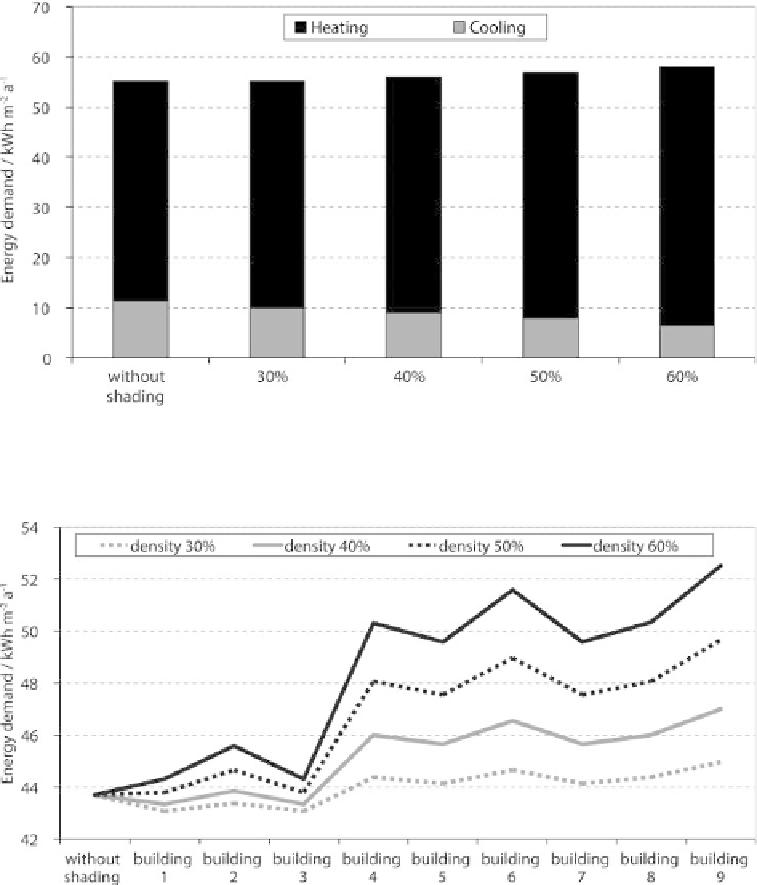Environmental Engineering Reference
In-Depth Information
is 17% higher than the other buildings in the middle of the terrace, as shown in Figure
18.13.4. The heating demand increases with site density by 11% for the corner houses
and 14% for the middle houses. The reflection effect with density barely influences
the heating demand of the terraced houses.
When considering the position of one building type with a given building compact-
ness (such as multi-family, single-family, courtyard, etc.) within the urban structure,
the influence of shading becomes evident.
The building most affected from mutual shading is the one located in the middle of
the urban structure that was considered above (building 9). Compared to the unshaded
Figure 18.13.2
Average heating and cooling demand of multi-family houses with increasing urban site
density under Stuttgart weather conditions. Similar tendencies are observed for the
single family or high rise blocks.
Figure 18.13.3
Heating demand of the multifamily house with different site coverage for the moderate
climatic conditions of Stuttgart/Germany. Building number refers to the position in the
cluster, as described in Figure 18.13.1.

Search WWH ::

Custom Search